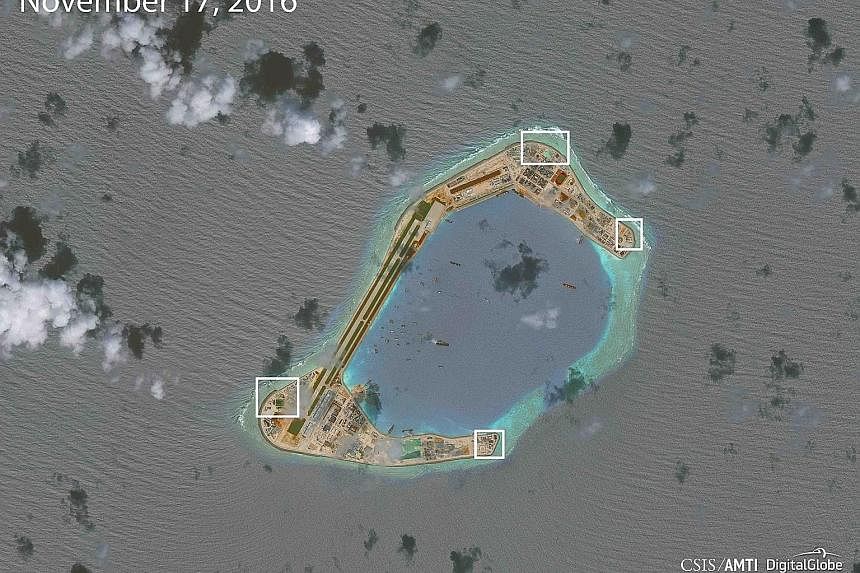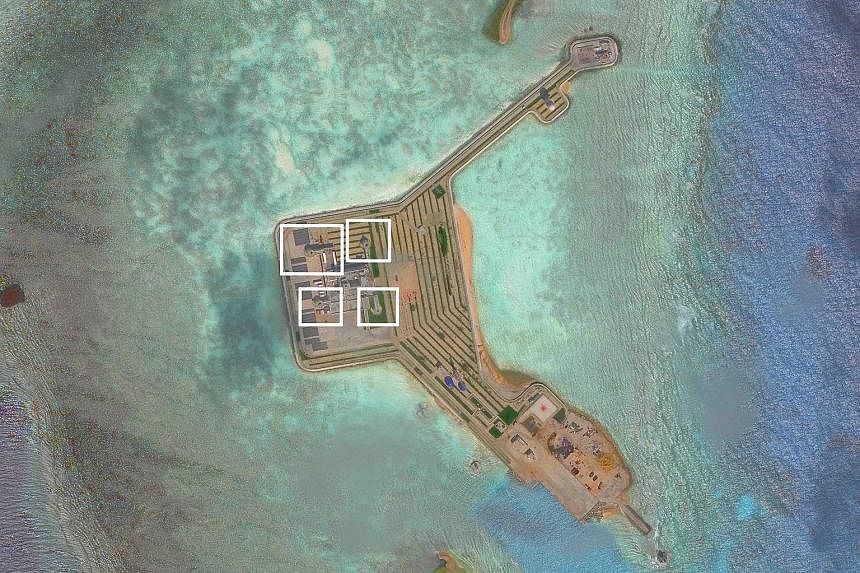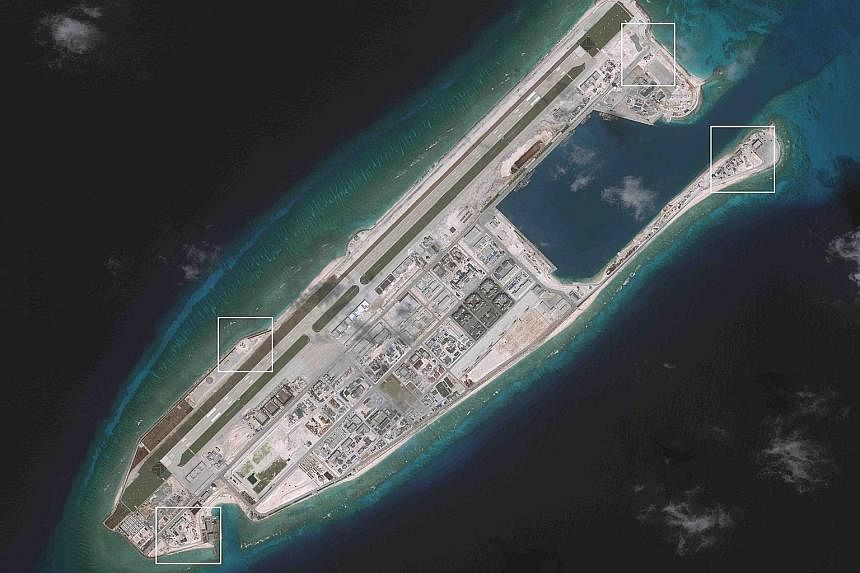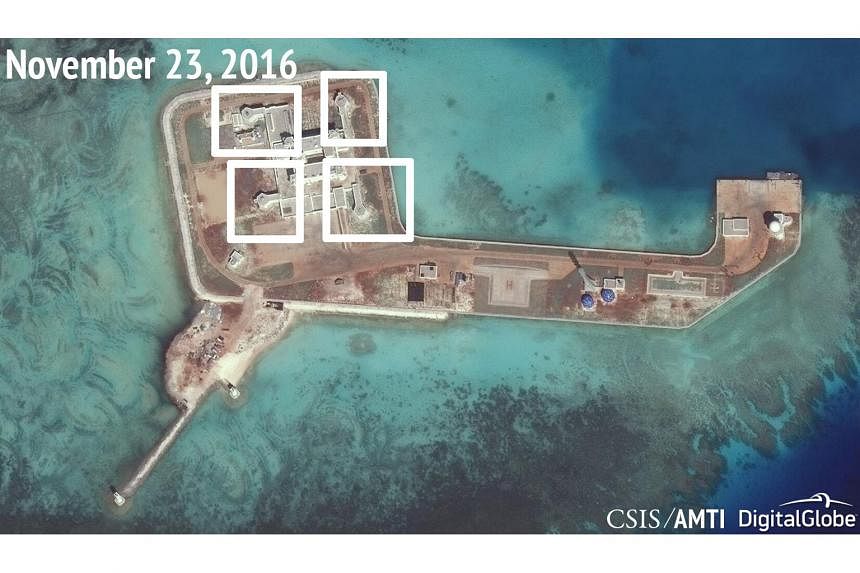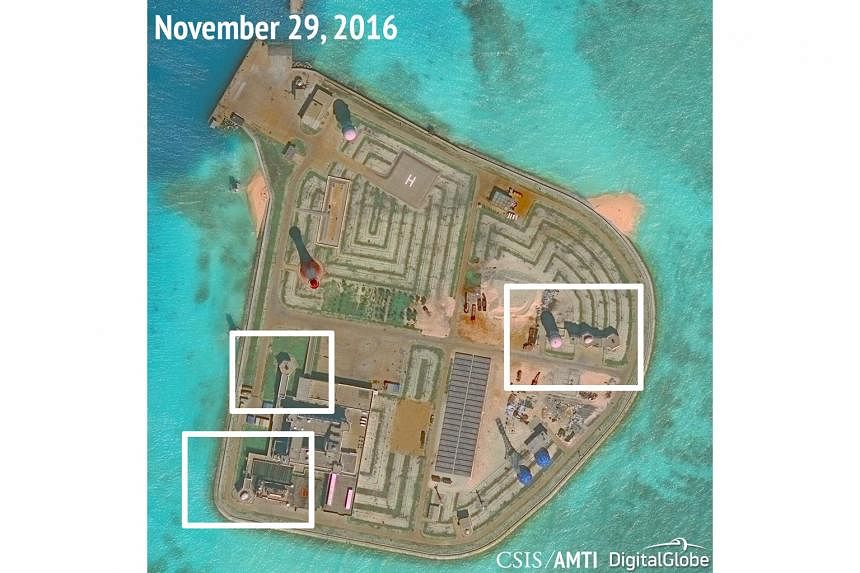WASHINGTON • China appears to have installed weapons, including anti-aircraft and anti-missile systems, on all seven of the artificial islands it has built in the South China Sea, a US think-tank reported, citing new satellite imagery.
The Asia Maritime Transparency Initiative (AMTI) said it began tracking in June and July the construction of identical hexagon-shaped structures to house weapons on Fiery Cross, Mischief and Subi reefs, where China has completed military-grade airstrips and installed radar.
"It now seems that these structures are an evolution of point-defence fortifications already constructed at China's smaller facilities on Gaven, Hughes, Johnson and Cuarteron reefs," said AMTI, citing new images taken last month. AMTI is a unit of the Centre for Strategic and International Studies.
This means all seven of China-occupied artificial islands in the South China Sea are now armed.
AMTI director Greg Poling said it had spent months trying to figure out the purpose of the structures.
-
NEW DEFENCE FORTIFICATIONS SEEN ON ARTIFICIAL REEFS IN SOUTH CHINA SEA
-
Fiery Cross Reef
-
A 3,000m runway; four multi-tiered, hexagon-shaped structures housing anti-aircraft guns and close-in weapons systems (CIWS). The function is to detect and destroy incoming missiles and enemy aircraft.
-
Mischief Reef
-
A runway; two completed and two ongoing constructions of multi-defence structures similar to the ones spotted on Fiery Cross and Subi reefs.
-
Subi Reef
-
A runway; four multi-defence structures for anti-aircraft guns, CIWS and a possible targeting radar tower.
-
Hughes Reef
-
A central headquarters building with four "arms" extending from the central structure. At the end of each arm is a hexagonal platform or tower housing anti-aircraft guns and CIWS.
-
Gaven Reef
-
A central headquarters building with four "arms" extending from the central structure. At the end of each arm is a hexagonal platform or tower housing anti-aircraft guns and CIWS.
-
Johnson Reef
-
A central headquarters building with two "arms", one sporting an anti-aircraft gun and the other, an apparent CIWS. A separate tower complex on the eastern side of Johnson Reef hosts an anti-aircraft gun, CIWS and a targeting radar.
-
Cuarteron Reef
-
Two structures housing an anti-aircraft gun and probable CIWS. Satellite images show a radar dome.
SOURCES: AGENCE FRANCE-PRESSE, ASIA MARITIME TRANSPARENCY INITIATIVE
"This is the first time that we are confident in saying they are anti-aircraft and close-in weapons systems (CIWS) emplacements. We did not know that they had systems this big and this advanced there," he said.
"This is militarisation. The Chinese can argue that it is only for defensive purposes, but if you are building giant anti-aircraft gun and CIWS emplacements, it means that you are prepping for a future conflict."
The AMTI report said the installations would likely back up a defensive umbrella provided by a future deployment of mobile surface-to-air missile (SAM) platforms such as the HQ-9 system reportedly deployed to Woody Island in the Paracel Islands, farther to the north in the South China Sea.
The installations call into question a pledge made by Chinese President Xi Jinping not to militarise the disputed reefs in the South China Sea, a shipping route through which some US$5 trillion (S$7.2 trillion) in trade passes each year.
The United States has patrolled the waterway largely unchallenged since World War II.
China said yesterday that while its construction on the islands was mainly for civilian use, it was "legitimate and normal" for it to take steps to defend its territory.
"If China's building of normal facilities and deploying necessary territorial defensive facilities on its own islands is considered militarisation, then what is the sailing of fleets into the South China Sea?" said Foreign Ministry spokesman Geng Shuang, in an apparent reference to US "freedom of navigation" patrols in the waters.
The patrols have angered Beijing, with a senior Chinese official in July warning the practice may end in "disaster".
The Philippines, one of several countries with competing claims in the sea, said it was still verifying the report.
"But if true, it is a big concern for us and the international community who use the South China Sea lanes for trade," said Philippine Defence Minister Delfin Lorenzana. "It would mean that the Chinese are militarising the area, which is not good."
China's claims to more than 80 per cent of the disputed waters were dismissed by an international tribunal in July. Beijing said it would ignore the ruling.
US President-elect Donald Trump, who takes office on Jan 20, has cited what he said was China's effort to build a "massive fortress" in the South China Sea as one reason for taking a more confrontational approach to relations.
REUTERS, BLOOMBERG
